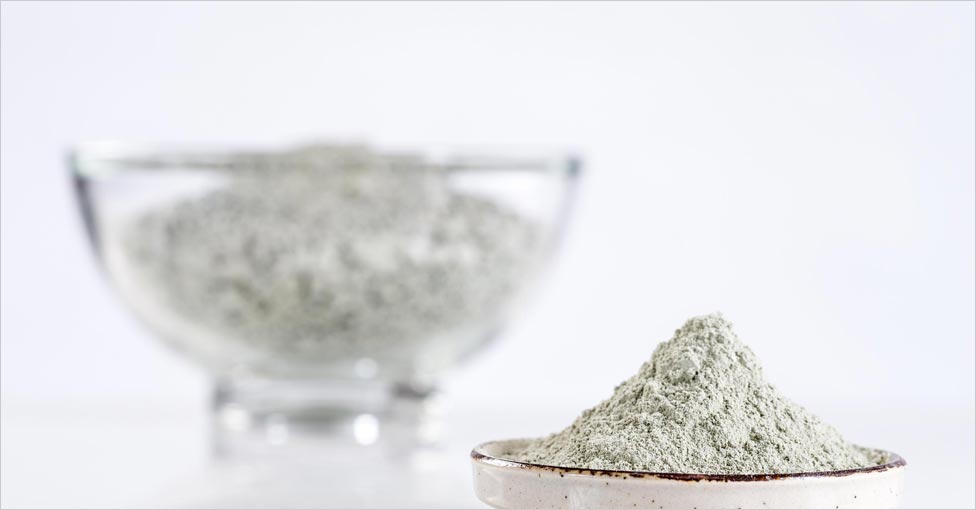Process properties and application of kaolin

According to the quality, plasticity and sandy content of kaolin ore itself, it can be divided into three types: hard, soft and sandy kaolin. Hard kaolin has a hard texture and no plasticity, but it has a certain plasticity after crushing and grinding; soft kaolin has a softer texture and better plasticity, and the amount of sand contained in it is less than 50%; The sandy kaolin has a looser texture and poor plasticity. It is better after sand removal, and the amount of sand contained in it generally exceeds 50%.
Pure kaolin has high whiteness, soft quality, easy to disperse and suspend in water, good plasticity and high viscosity, excellent electrical insulation properties; has good acid solubility, low cation exchange capacity, good Physical and chemical properties such as fire resistance.
Application of kaolin
1. Application of kaolin in cement-based materials
Kaolin becomes metakaolin due to dehydration. Cement can usually be prepared by alkali activation, or used as an additive to concrete materials. Kaolin can improve the strength, workability and durability of concrete, and at the same time resist the autogenous shrinkage of concrete. Kaolin cement-based materials have excellent performance and a wide range of applications, and their development prospects are worthy of attention.
2. Application of kaolin in ceramic industry
In the ceramic industry, the application of kaolin is earlier than other industries, and the dosage is also very large, usually accounting for about 20% to 30% of the formula. Kaolin can increase the content of A1203 in ceramics, and the formation process of mullite is easier, thus improving the stability and sintering strength of ceramics.
3. Application of kaolin in refractory industry
Because of its high refractoriness, kaolin is usually used in the production and processing of refractory products. Refractory materials are mainly divided into two types: refractory bricks and silicon-aluminum wool, which have the characteristics of high temperature resistance and small deformation under pressure. A series of high temperature resistant clays including kaolin, bauxite, bentonite, etc. are collectively called refractory clay.
4. Application of modified kaolin in coatings
Kaolin has been used as a filler for coatings and paints for a long time because of its white color, low price, good fluidity, stable chemical properties, and large cation exchange capacity on the surface. Kaolin used in coatings generally includes washed superfine kaolin and calcined superfine kaolin.
5. Application of kaolin in paint industry
TiO2, CaC03, talc, and kaolin are the main mineral raw materials used in the paint industry. Among them, kaolin has requirements for its dispersibility, particle size, and content of colored oxides. Because of its white color, low cost, good fluidity and suspension, chemical inertness, strong covering power and other properties, kaolin mainly plays the role of filler and pigment substitute in paints, and can reduce the need for expensive dyes quantity.
6. Kaolin is used in plastic industry
As a filler, kaolin is generally used in an amount of 15% to 60% in plastics. Its function is to make the appearance of plastic products smooth, accurate in size, resist chemical corrosion, reduce thermal shrinkage and thermal fission, and facilitate the polishing process. In the production process of polyvinyl chloride, kaolin is usually used as a strengthening agent to improve the abrasion resistance and durability of plastic products.
7. Kaolin is used to make glass fiber in pond kiln
Kaolin, which is low in iron, is used in fiberglass manufacturing primarily as a source of aluminum and silicon, as well as to dull its luster. The technical content of glass fiber drawing in the pool kiln is relatively high, and for glass fiber forming, it is required to reach the quasi-optical level. The quality and stability of kaolinite homogenized micropowder are the primary factors affecting the kiln glass fiber drawing process, and the alkali-free kiln glass fiber has strict quality requirements for kaolinite homogenized micropowder.
8. Application of kaolin in paper industry
In the paper industry, the international market of kaolin is relatively prosperous, and its sales volume exceeds that of ceramics, rubber, paint, plastics, refractory materials and other industries. In pulp, kaolin usually does not react with its ingredients, has strong stability, and is well retained in paper fibers.
9. Application of kaolin in rubber industry
Kaolin, which is used in the rubber industry, is filled into the colloidal mixture, which can enhance the wear resistance, chemical stability and mechanical strength of the rubber, prolong its hardening time, and can also adjust the mixing, rheological and vulcanization properties of the rubber, and improve the durability of the rubber.
